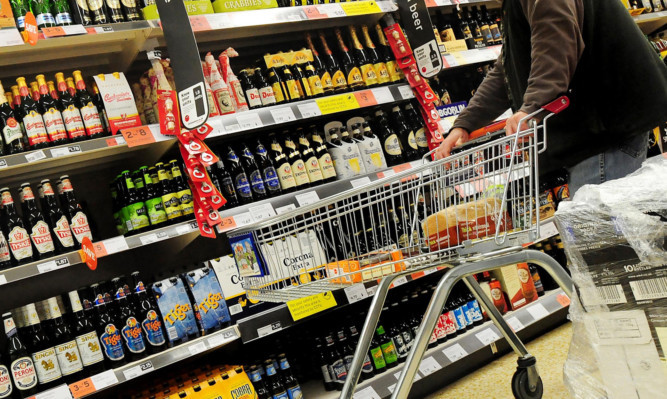Scotland should introduce alcohol-only check-outs and ban drinks advertising unless in licensed premises, according to health professionals.
The measures are among 20 recommendations on the price, availability and marketing of alcohol made by Scottish Health Action on Alcohol Problems (Shaap).
The organisation, which was set up by the Scottish Medical Royal Colleges, has written to all MSPs setting out its manifesto in the run-up to May’s Holyrood election.
It points out Scotland has one of the highest liver cirrhosis mortality rates in western Europe, with alcohol death rates almost twice the level they were in the early 1980s.
The manifesto calls for a national licensing authority to regulate the number, type and opening hours of alcohol outlets as well as a legal requirement for alcohol-only check-outs in all licensed shops.
Shaap wants the Scottish Government to seek devolution of powers from Westminster over all alcohol advertising and set up an independent regulatory body to control it.
A target date should be set for the prohibition of all alcohol advertising except in licensed premises, with an immediate ban in sports-related settings, including sponsorship.
All alcoholic products should also be labelled with ingredients, calorie counts and health risks, it added.
Shaap said Scottish Government plans for minimum unit pricing, currently subject to legal challenge, should be implemented “as soon as possible” while Scottish ministers should also campaign for the reintroduction of the UK alcohol duty escalator and support a UK review of alcohol duty rates.
Director Eric Carlin said: “After several years of welcome reductions in alcohol-related hospitalisations and harms, these are both on the increase again.
“It is vital that alcohol policy in Scotland should be aligned to the WHO’s (World Health Organisation) ten ‘Best Buy’ recommendations, with a specific focus on increasing the price of the cheapest, most harmful products and taking action to restrict the availability and marketing of alcohol.”
Chair Dr Peter Rice added: “There has been much good work in Scotland in recent years in prevention and in helping individuals and families, but much remains to be done.
“Some of this work will be to progress existing policies, in particular minimum unit price, which has been delayed by the actions of global alcohol producers.
“There are other new actions, for instance, on licensing and the way alcohol is sold, which we are keen to see introduced.”
Public Health Minister Maureen Watt said: “We’ve taken considerable action to reduce alcohol harm through our Alcohol Framework, including the quantity discount ban, a ban on irresponsible promotions, a lower drink drive limit, improved substance misuse education and our nationwide alcohol brief intervention programme. This was recognised in the recent Four Nations report, which recognised Scotland as leading the way in the UK.
“But while there are around 22 people a week dying in Scotland because of alcohol then there is absolutely no room for complacency. We will introduce the next phase of our Alcohol Framework later this year which will build on the progress so far.
“Given the link between consumption and harm, and evidence that affordability is one of the drivers of increased consumption, addressing price is an important element of any long-term strategy to tackle alcohol misuse and as such we remain committed to introducing minimum unit pricing.”
